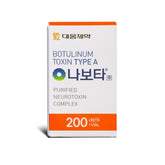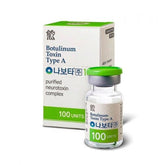Comparing Different Lipolysis Techniques: Injection vs. Laser vs. Ultrasound

Comparing Different Lipolysis Techniques: Injection vs. Laser vs. Ultrasound. In the quest for a more contoured body, lipolysis techniques have gained popularity as effective methods for reducing unwanted fat. Among the various options available, injection lipolysis, laser lipolysis, and ultrasound lipolysis stand out as some of the most widely used techniques. Each method has its own advantages, mechanisms, and considerations. This blog post aims to compare these different lipolysis techniques, providing a comprehensive understanding to help you choose the best option for your needs.
Injection Lipolysis
Overview
Injection lipolysis, commonly known by brand names such as Kybella, involves the injection of a chemical solution directly into the fat deposits. The active ingredient, usually deoxycholic acid, breaks down the fat cell membranes, causing them to dissolve and be naturally eliminated by the body.
Mechanism
-
Active Ingredient: Deoxycholic acid, a naturally occurring molecule in the body that aids in the breakdown and absorption of dietary fat.
-
Process: Multiple small injections are administered into the targeted fat area. The deoxycholic acid disrupts the fat cell membranes, leading to cell death.
-
Elimination: The body's natural metabolic processes gradually remove the destroyed fat cells over a few weeks.
Advantages
- Minimally Invasive: The procedure involves only injections, with no need for incisions or anesthesia.
- Targeted Treatment: Effective for small, localized fat deposits, such as under the chin or around the jawline.
- Permanent Results: Once fat cells are destroyed, they do not regenerate.
Considerations
-
Multiple Sessions: Several treatments may be required to achieve the desired results.
-
Swelling and Bruising: Temporary side effects like swelling, bruising, and redness are common.
-
Cost: The cumulative cost can be high due to the need for multiple sessions.
Laser Lipolysis
Overview
Laser lipolysis, often referred to by brand names like SmartLipo, uses laser energy to liquefy fat cells. This technique not only targets fat reduction but also stimulates collagen production, leading to skin tightening.
Mechanism
- Laser Energy: A laser fiber is inserted under the skin through a small incision. The laser energy heats and melts the fat cells.
- Fat Removal: The liquefied fat can either be suctioned out or left for the body to metabolize naturally.
- Skin Tightening: The heat from the laser stimulates collagen production, helping to tighten the skin in the treated area.
Advantages
- Skin Tightening: In addition to fat reduction, laser lipolysis promotes skin tightening, which can enhance the overall results.
- Minimally Invasive: The procedure involves small incisions and localized anesthesia.
- Quick Recovery: Recovery time is generally shorter compared to traditional liposuction.
Considerations
- Surgical Procedure: Although minimally invasive, it still involves small incisions and local anesthesia.
- Potential for Burns: The heat generated by the laser can cause burns if not properly controlled.
- Cost: Laser lipolysis tends to be more expensive than non-invasive treatments.
Ultrasound Lipolysis
Overview
Ultrasound lipolysis, known by brand names like UltraShape and Liposonix, uses focused ultrasound waves to break down fat cells. This non-invasive method is ideal for contouring specific areas of the body without surgery.
Mechanim
- Ultrasound Waves: High-frequency sound waves target fat cells beneath the skin, causing them to vibrate and break apart.
- Fat Metabolism: The disrupted fat cells are gradually processed and eliminated by the body's lymphatic system.
- Targeted Areas: Commonly used for areas such as the abdomen, flanks, and thighs.
Advantages
- Non-Invasive: No incisions, needles, or anesthesia are required.
- Minimal Discomfort: The procedure is generally painless, with minimal discomfort during and after treatment.
- No Downtime: Patients can resume normal activities immediately after the procedure.
Considerations
-
Multiple Sessions Needed: Several treatments may be necessary to achieve optimal results.
-
Gradual Results: The fat reduction process is gradual, with results becoming visible over several weeks.
-
Effectiveness: May be less effective for larger or denser fat deposits compared to invasive methods.
Comparing the Techniques
When deciding between injection lipolysis, laser lipolysis, and ultrasound lipolysis, it's essential to consider factors such as the targeted area, desired results, and personal preferences.
Effectiveness
- Injection Lipolysis: Highly effective for small, localized fat deposits. Results are permanent once fat cells are destroyed.
- Laser Lipolysis: Effective for both fat reduction and skin tightening, suitable for various body areas.
- Ultrasound Lipolysis: Effective for contouring and reducing fat in larger areas, but results are more gradual.
Recovery and Downtime
- Injection Lipolysis: Minimal downtime with temporary swelling and bruising.
- Laser Lipolysis: Short recovery period with minor incisions, some swelling, and potential for mild discomfort.
- Ultrasound Lipolysis: No downtime, allowing immediate return to daily activities.
Safety and Risks
- Injection Lipolysis: Risks include swelling, bruising, and rare cases of nerve damage.
- Laser Lipolysis: Risks involve burns, infection, and minor scarring due to the heat and small incisions.
- Ultrasound Lipolysis: Generally very safe with minimal side effects, mostly involving mild redness or bruising.
Cost
- Injection Lipolysis: Cost varies but can be high due to multiple sessions needed.
- Laser Lipolysis: Typically more expensive due to the technology and precision involved.
- Ultrasound Lipolysis: Costs vary, generally falling between injection and laser lipolysis.
Each lipolysis technique whether injection, laser, or ultrasound offers unique benefits and considerations. Injection lipolysis is ideal for small, targeted areas with permanent results but requires multiple sessions. Laser lipolysis provides the added benefit of skin tightening with a quick recovery period, though it involves minor surgery. Ultrasound lipolysis is a non-invasive option with no downtime, best for larger areas needing gradual reduction.
Choosing the right lipolysis technique depends on your specific needs, the area being treated, and your preferences regarding invasiveness, recovery time, and budget. Consulting with a qualified healthcare provider can help determine the most suitable method for achieving your desired body contouring results. With the right approach, you can achieve a more sculpted and confident appearance.





